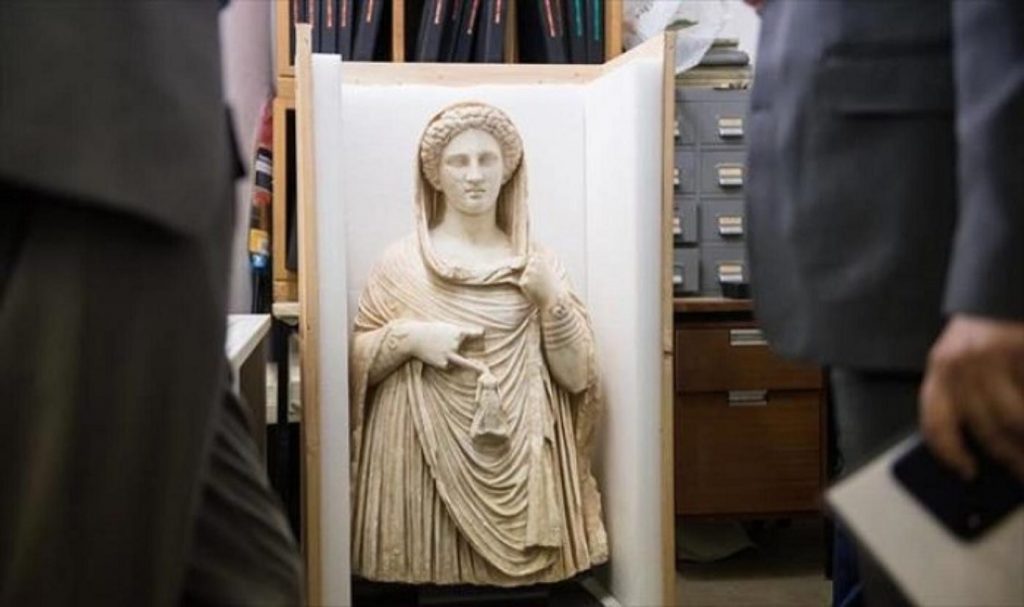Tripoli_ Libyan authorities have repatriated a rare 2,000 year old marble statue of Greek goddess with the help of the British Museum. Its repatriation was announced at the Libyan embassy in London on Monday 10 May.
The well-preserved marble statue, dating from the second century BC and probably depicting Persephone, would have been fixed to a tomb in a cemetery in the ancient Libyan city of Cyrene. She has snake bracelets carved into her wrists and is holding a small doll, making it, the museum said, “one of the rarest of the Cyrenaican funerary statues”.
The museum first became involved in 2013 when UK customs asked for help in identifying the statue seized by Border Force officials at Heathrow airport.
The museum said, “one of the rarest of the Cyrenaican funerary statues”.
The museum first became involved in 2013 when UK customs asked for help in identifying the statue seized by Border Force officials at Heathrow airport.
Peter Higgs, a curator, recalled going to Heathrow and knowing straight away what it was and where it was from.
“It is stunning,” he said. “It is a beautiful, three-quarter-length statue, very well preserved with just a few fingers missing. It is technically brilliant in the way it has been carved, with very sharp details, and the face is very well preserved considering many Greek statues have lost noses.”
It was made to be inserted into a cavity over a tomb and is believed to represent the Greek goddess Persephone. It is thought it shows her emerging from the underworld where, according to Greek mythology, she spent a third of the year with Hades.
“It would have been a very high-status tomb,” said Higgs. “There are other statues, most of which are still in Libya, in museums. This I personally think is one of the best in terms of preservation and carving quality.”
The doll figure probably represents a keepsake taken into the afterlife, while the bracelets showing snakes are associated with death and rebirth.
The freshness of its surface suggested it had been illegally excavated only recently, and it was probably exported during the upheavals of 2011.
The museum gave evidence for the prosecution at a court case in 2015 and the judge ruled that it was owned by the state of Libya.
Since then the statue has been stored in a basement at the British Museum while the wheels involved in the process of getting it back to Libya turned slowly.
Hartwig Fischer, the director of the British Museum, said: “An important part of the museum’s work on cultural heritage involves our close partnership with law enforcement agencies concerned with illicit trafficking. Agencies
